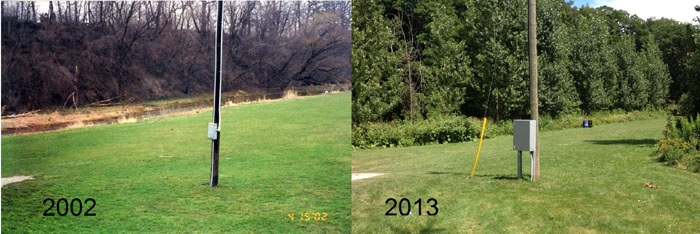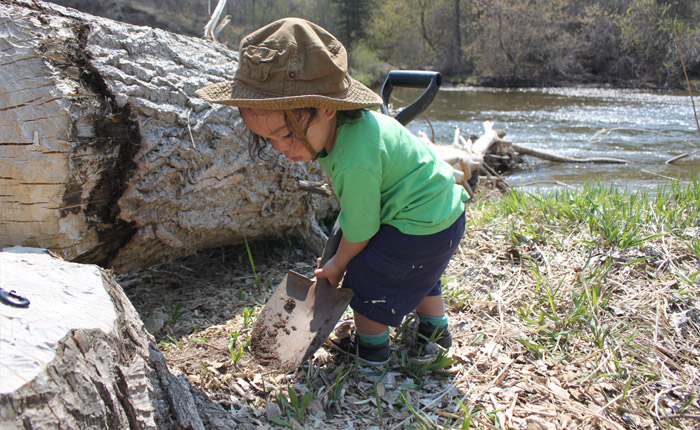
Welcome to the Credit River Anglers Association’s before and after conservation gallery. This series highlights some of the fantastic work thousands of volunteers have done to make our environment a much better place for fish, wildlife and everybody! Each photo in the gallery shows a before and after image of the exact same site. We have tried to ensure each image is from the some position and in some photos have highlighted a reference point to make comparison even easier. Please keep in mind many of the sites shown are on private property and we ask that you respect private land and not trespass.
This is what hard work, dedication and a commitment to improving the environment can achieve. CRAA has hundreds of rehabilitation sites, in several watersheds including the Credit, Bronte and Sixteen Mile. All of this work has been done through volunteers, from the many hard working volunteer executive members to members that have only come out once. You can make a difference. Get involved today!
Glen Williams (Sheridan Nursery property) was first planted in 1999 by CRAA. The tree planting crew hired by CRAA can be seen watering the trees in the tall grass. In the 2009 photo the trees exceed 50 feet tall. Volunteers and summer crews have planted the property several times since 1999 to expand the planting success. The site has been planted with several thousand trees covering 2,200 m of river.
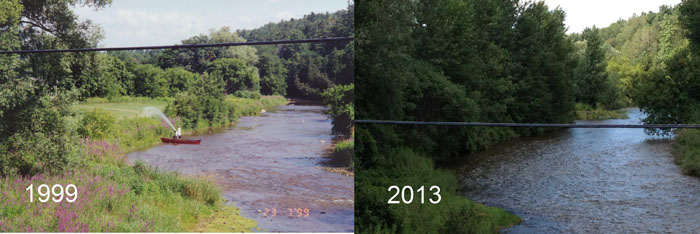
Glen Williams (Hancock Farm) was first planted in 1999 as well. The incredible change to the North West river bank is amazing. However in 2001 this entire area was cut down by beavers. Many of the trees seen in the after photo have grown from the old stumps, while others have been planted by CRAA since. In 2002 volunteers tree guarded the trees using different tree guards to prevent beaver damage. This site taught us a great deal about the best materials to use and has been very successful in bringing back the riparian forest. Back in 1998 we found this farm increased the river temperature by almost 4 C. The impact is now reduced to only 2C. Cattle’s fencing was also installed to restrict access and protect the stream bank. Starting in 2007 we began planting the south shore and have planted it again in 2008 and 2009. Due to poor soil (mostly rock), beavers, ice and flooding the south side has been more difficult, but we are making great progress. The trees are still so small they are difficult to see in the after photo in 2009. This property is 800 m long.
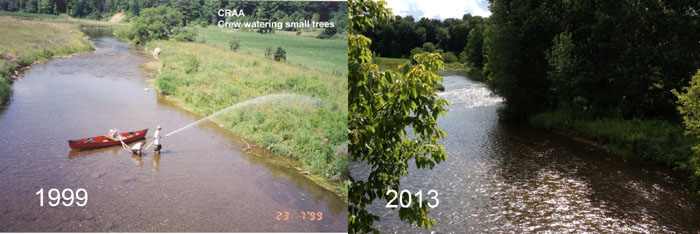
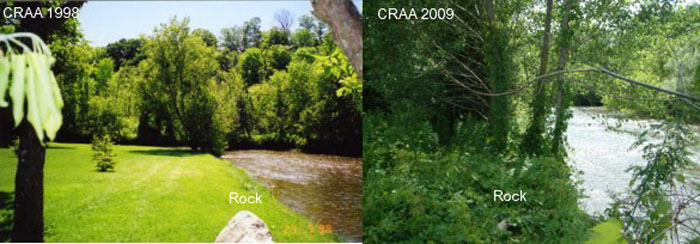
Glen Williams (Biggar property) was planted mainly in 1999, with a few touch up plantings since. Note the same rock is noted in both photos as a reference point. What an amazing change from grass to forest!
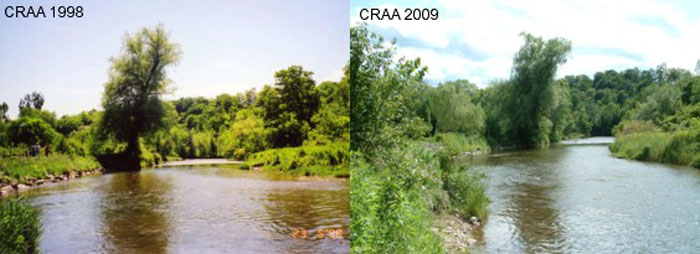
Glen Williams (Biggar property) seen from upstream on the Hancock Farm. Again the major increase in riparian vegetation is incredible.
Huttonville Creek (Apple Factory) at the corner of Mississauga Road and Highway 7 now Bovard. This site was planted in the 2000 by CRAA’s summer planting crew and volunteers in May of 2000. Again what an incredible change. This tiny tributary is the only cold water stream that consistently produces wild salmonids to the Credit River downstream from Norval dam. It is also home to endangered redside dace and many other minnow species.
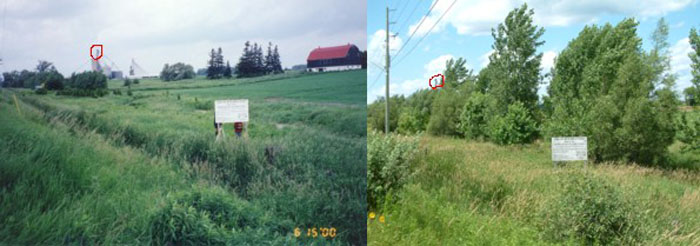
Huttonville Creek (Apple Factory) north of Bovaird was originally planted in 1994 by CVC and CRAA. This was one of the CRAA’s first stream rehabilitation and tree planting projects and certainly acted as a catalyst for the hundreds of sites since. In addition to planting, the site had cattle fencing and a cattle crossing installed. The change is incredible!
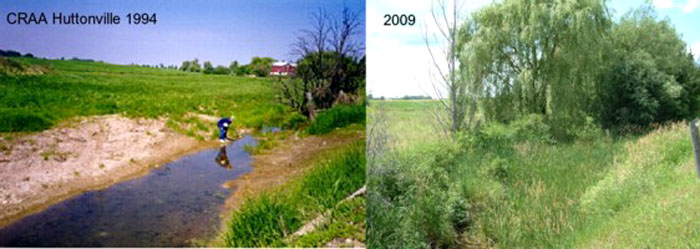
Terra Cotta (Rogers Creek) at King Road. Rogers Creek has been the focus of several conservation partners working together to rehabilitate the habitat of this once cold water stream. In this photo a joint CRAA/CVC/MNR/TU project we built a rocky ramp and added baffles under the bridge. The rocky ramp allows all fish (of any size and specie) to access the stream from the main Credit River . The small dam in the before photo was only 35 cm high, but prevented brook trout, juvenile salmonids and most minnow species from accessing the stream. The baffles (seen under the right tunnel of the bridge) focus the flow of water to allow passage by fish of all sizes. In the before photo the depth was only 2-3 cm in summer. Now it runs about 20 cm deep so adult salmonids and juveniles can move as they like. This single project opened access to 3 km of cold water stream.
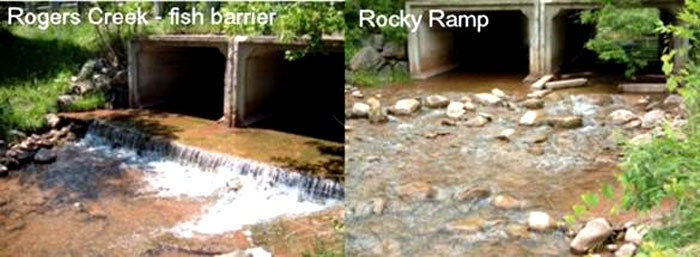
Mississauga (Streetsville) was planted for the first time in 2000, but severe flooding and winter ice cut off most small trees. This site was the first area planted by a test project in 2002 where volunteers planted 80 large nursery grown trees. The work was such a success it became a primary tool used by CRAA in work since 2003. By planting mature trees (3-10 m tall) we found they could survive flooding, ice and park use impacts and in turn provided protection to the smaller trees.
